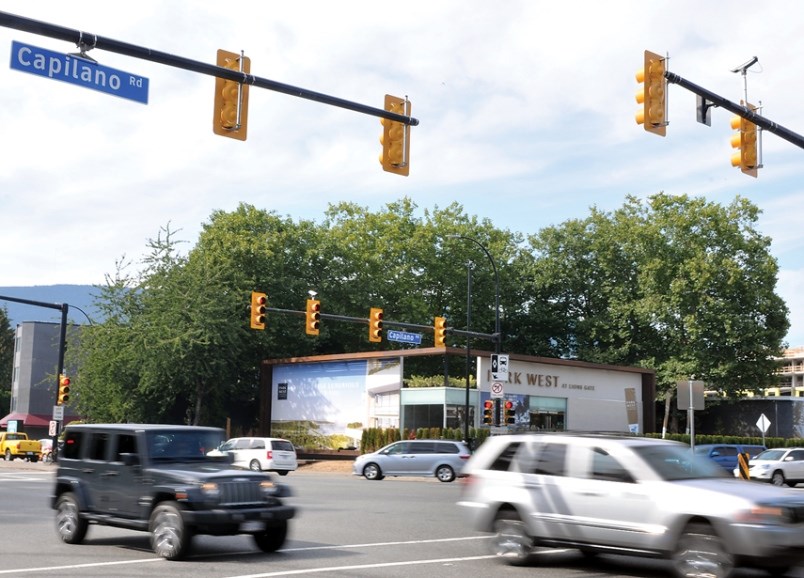Drivers tempted to gun the accelerator through intersections before the lights change may want to slow their roll.
The provincial government is expanding its intersection enforcement program at high-crash locations to include speeding as well as red-light running.
On the North Shore, lead-foot drivers who race through the intersection of Capilano Road and Marine Drive in North Vancouver will soon have their speeds clocked by an intersection camera. Anyone speeding through the intersection can expect to receive a speeding ticket in the mail.
The intersection at Capilano and Marine was identified as one of 35 intersections with existing red-light cameras considered a prime target for speed enforcement based on data gathered from the 140 intersection cameras currently in operation.
According to the province, between 2012 and 2016, intersection cameras provincewide captured an average of 10,500 vehicles a year going at least 30 kilometres per hour over the posted speed limit. Speed has been one of the top contributing factors in casualty crashes at those 140 intersections, according to the province. About 60 per cent of crashes happen at intersections.
Neither the police nor the province will say how much over the speed limit a vehicle will have to be going to trigger a ticket from the cameras.
Beginning this summer, the province will install warning signs at the intersections where new speeding enforcement will be put in place and add technology to the camera systems to allow cameras to ticket registered owners of speeding vehicles captured by Big Brother. No date has been given yet for when the speeding enforcement will go into effect.
Intersections were chosen for camera speed enforcement based on data about the prevalence of speeding drivers, how fast those drivers were going, records for the number of crashes causing serious injury or death, as well as technical considerations about how feasible the location was, according to the province.
Last summer, the provincial government upped the ante on drivers who blow through red-light cameras by making the enforcement cameras at those 140 intersections operational around the clock. Previously, the cameras were only turned on for six hours a day. On the North Shore, cameras are installed at three intersections, including Taylor Way and Marine Drive, and Main Street at Mountain Highway as well as the Capilano and Marine intersection.
Marine Drive and Taylor Way is the most dangerous intersection on the North Shore according to ICBC, which compiled data on crashes that resulted in injuries or a fatality. Between 2013 and 2017, there were 742 crashes at that intersection. At Capilano and Marine there were 471 crashes during the same time frame.
Highway on- and off-ramps and bridges are also danger zones for crashes, according to ICBC.
The on- and off-ramps where traffic from Lonsdale Avenue enters and exits Highway 1 netted the highest number of crashes, with 808 in the four-year period between 2013 and 2017. The on-ramp to Highway 1 from Capilano Road registered 766 crashes, while the area from the nearby Mosquito Creek Bridge over the Capilano River to the Westview highway exits and entrances netted 707 crashes. Main Street and the area around the Dollarton Highway exits and entrances logged 506 crashes.
There were also 542 serious crashes on the Lions Gate Bridge and 339 crashes on the Ironworkers Memorial Second Narrows Crossing during those four years, according to ICBC statistics.



